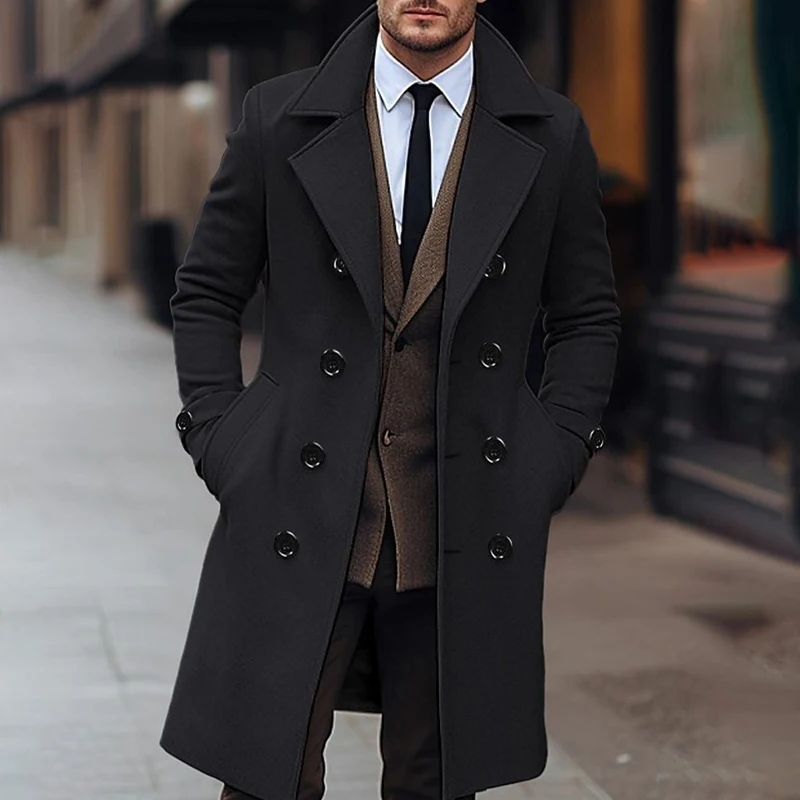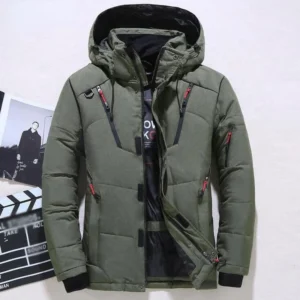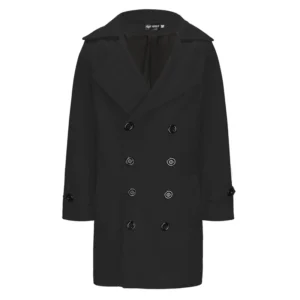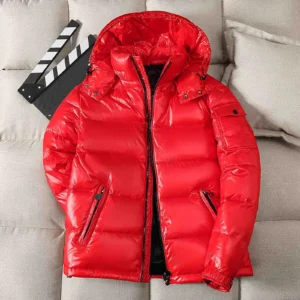1. Understanding Pea Coats: Heritage and Modern Significance
The pea coat stands as one of fashion’s most enduring staples, with roots deeply anchored in naval history. Originally designed for sailors braving harsh sea conditions, these sturdy coats have weathered decades of changing fashion trends while maintaining their distinctive features—the double-breasted front, broad lapels, and shorter length that sets them apart from other outerwear.
Today’s pea coats represent a perfect blend of historical significance and contemporary style, making them versatile additions to any wardrobe. The debate between classic and slim fit pea coats isn’t merely about fashion preference—it’s a choice between embracing tradition or adopting a modern interpretation of this iconic piece.
Understanding the nuances of choosing the right coat length becomes particularly important when considering different fit styles, as proportions can dramatically affect both appearance and functionality. Whether you’re exploring our collection of premium men’s pea coats or researching your first purchase, the fit you select will significantly impact both your style statement and practical comfort.
2. The Classic Fit Pea Coat: Traditional Design Elements
The classic fit pea coat honors its naval heritage with a design focused on functionality, protection, and ease of movement. This traditional approach to tailoring emphasizes practicality without sacrificing style.
Key design elements of the classic fit include:
- Overall silhouette: Roomier throughout with straighter lines that follow the body without hugging it
- Shoulder construction: Sits slightly beyond the natural shoulder (approximately 0.5-1 inch), creating a structured, commanding presence
- Chest and waist: Minimal tapering between chest and waist, typically only 2-4 inches of reduction to maintain a consistent shape
- Sleeve circumference: Wider arms designed to comfortably accommodate layering with sweaters or suit jackets
- Length: Traditional hip to mid-thigh coverage (typically 30-32 inches for a size medium) providing optimal protection from the elements
The fabric composition of classic fit pea coats generally features heavyweight melton wool (20-32 oz weight), offering superior warmth and wind resistance. The substantial material holds the coat’s shape while providing exceptional insulation—a nod to the garment’s functional origins.
For those who appreciate tradition, our men’s double-breasted pea coat collection maintains these classic design principles while incorporating subtle modern refinements.
3. The Slim Fit Pea Coat: Modern Reinterpretation
The slim fit pea coat represents a contemporary adaptation of the traditional design, catering to modern preferences for tailored silhouettes and streamlined proportions. This interpretation maintains the pea coat’s iconic elements while reimagining its overall shape.
Key design elements of the slim fit include:
- Overall silhouette: Tailored and body-contouring with a defined shape that follows the natural lines of the body
- Shoulder construction: Sits precisely at the natural shoulder, creating a sleek appearance without extra fabric
- Chest and waist: Significant tapering between chest and waist, typically 4-6 inches of reduction for a more pronounced V-shape
- Sleeve circumference: Narrower, fitted arms that minimize bulk and create a cleaner line
- Length: Often slightly shorter than classic versions (typically 28-30 inches for a size medium) for a more contemporary proportion
While maintaining quality wool construction, slim fit pea coats often utilize slightly lighter weight fabrics (16-24 oz) with added stretch components to accommodate the closer fit while preserving comfort and mobility.
Understanding proper mens coat length guide principles becomes especially important with slim fits, as their proportions must be precisely balanced to maintain the coat’s visual harmony and practical functionality.
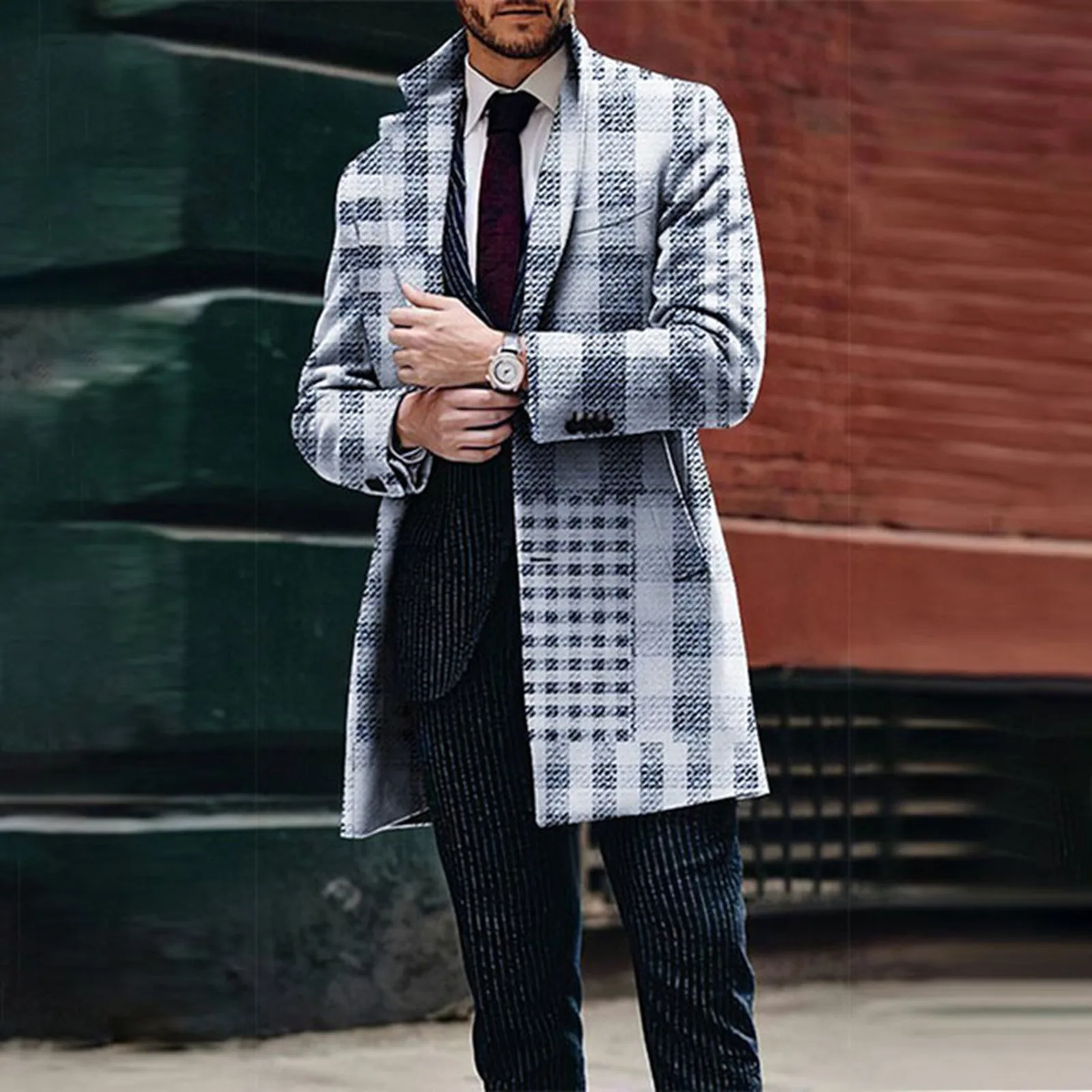
4. Side-by-Side Comparison: Classic vs. Slim Fit Features
To truly understand the differences between classic and slim fit pea coats, a direct comparison reveals how each detail contributes to the overall wearing experience:
| Feature | Classic Fit | Slim Fit |
|---|---|---|
| Silhouette | Straight, boxy shape with minimal tapering | Contoured shape with significant waist suppression |
| Shoulders | Extends 0.5-1” beyond natural shoulder | Aligns with natural shoulder edge |
| Chest | Approximately 4-5” of room beyond body measurement | Approximately 2-3” of room beyond body measurement |
| Waist | Minimal reduction from chest (2-4”) | Significant reduction from chest (4-6”) |
| Sleeve Width | Wider to accommodate layers (8-9” circumference at bicep for medium) | Narrower with less room (7-7.5” circumference at bicep for medium) |
| Length | Hip to mid-thigh (30-32” for medium) | Typically 1-2” shorter than classic fit |
| Layering Capacity | Can accommodate thick sweaters, suit jackets | Best with thinner layers like light sweaters |
| Weight | Typically heavier (20-32 oz wool) | Often lighter (16-24 oz wool) |
These differences create distinct wearing experiences. The classic fit prioritizes versatility and comfort, particularly in cold weather requiring layers. The slim fit emphasizes a modern silhouette at the potential cost of some layering capacity.
For example, a size medium classic fit pea coat typically offers a 46” chest measurement compared to a 44” chest in a slim fit of the same size—a difference that significantly impacts how the garment drapes and functions. Our men’s wool pea coat collection includes both fits, allowing customers to select according to their specific needs and preferences.
5. Body Types and Fit Compatibility
Finding the pea coat fit that best complements your body type is essential for both comfort and style. Each body shape has different considerations when choosing between classic and slim fit options.
Athletic/Muscular Build
Men with broader shoulders and chests combined with narrower waists often face challenges with off-the-rack sizing. Classic fits may provide necessary shoulder and chest room but appear boxy at the waist. Slim fits might better follow your natural V-shape but could be restrictive across the shoulders and chest. Consider a classic fit with tailored waist adjustments for optimal balance.
Slim/Slender Build
For leaner frames, slim fit pea coats typically offer the most flattering silhouette by providing some structure without overwhelming your frame with excess fabric. Classic fits can sometimes create a “swimming in fabric” effect unless you’re specifically seeking a more relaxed, oversized look.
Average Build
Those with balanced proportions enjoy the greatest flexibility. Your choice can be based primarily on style preference rather than accommodation. Classic fits provide a timeless, versatile option, while slim fits create a more fashion-forward appearance.
Broader/Larger Build
For fuller figures, classic fit pea coats generally offer superior comfort and a more flattering drape. The straighter lines complement your frame without unnecessarily emphasizing width, while providing comfortable room for movement and layering.
When evaluating fit, always check these key measurement points: shoulders should align properly (either at or slightly beyond your natural shoulder depending on fit style), the buttoned coat should have enough room for a fist between your chest and the fabric, and sleeves should end at your wrist bone.
For additional guidance on achieving proper proportions, our guide on perfect coat length for every body type provides valuable insights for creating a balanced silhouette.
6. Styling Versatility: How Each Fit Performs
The fit of your pea coat significantly influences its styling potential across different occasions and outfit combinations. Understanding these differences helps you maximize your coat’s versatility.
Layering Capabilities
- Classic fit excels with:
- Chunky knit sweaters up to 1.5” thick
- Suit jackets and blazers
- Multiple layers (shirt + sweater + light jacket)
Heavier winter accessories
Slim fit works best with:
- Thin to medium-weight sweaters (under 1” thick)
- Dress shirts and lightweight button-ups
- Single layers or very thin multiple layers
- Streamlined winter accessories
Outfit Pairings
For casual settings, both fits pair well with jeans and casual shirts, though classic fits create a more relaxed silhouette while slim fits present a more intentional, styled appearance. With business casual attire like dress shirts and trousers, slim fits often create a more cohesive, tailored aesthetic that complements the cleaner lines of dress clothes.
The classic fit pea coat offers superior cold-weather versatility due to its generous layering capacity, while slim fits often perform better in milder conditions or when prioritizing appearance over maximum warmth. When accessorizing, classic fits balance well with substantial scarves, while slim fits typically look best with thinner, more precisely arranged neck wear.
Understanding the differences between double-breasted vs single-breasted coat designs can further enhance your styling options, as these closure styles interact differently with classic and slim silhouettes.
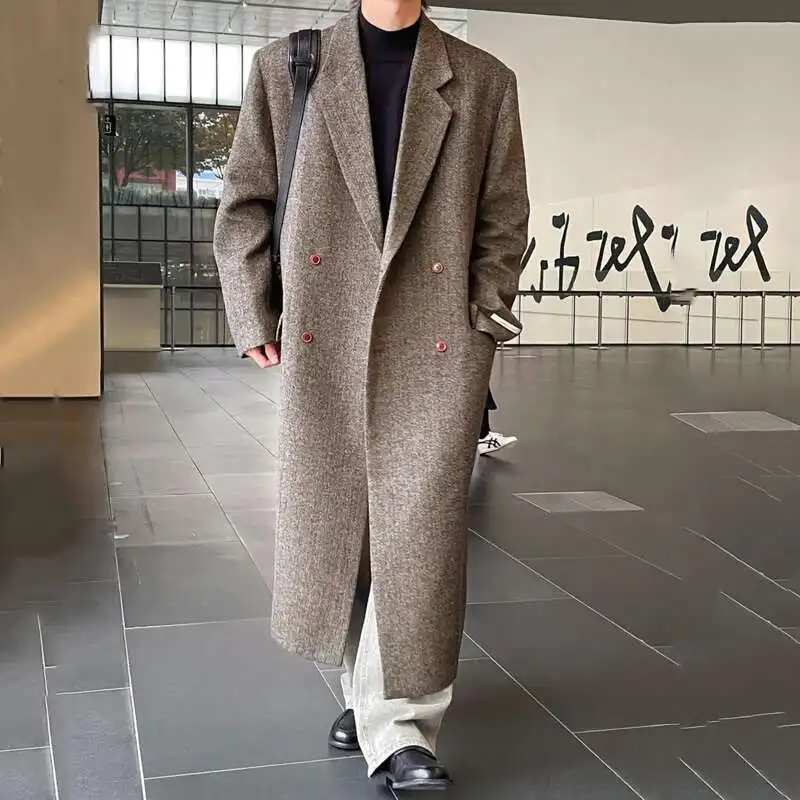
7. Comfort and Functionality Factors
Beyond aesthetics, the functional differences between classic and slim fit pea coats significantly impact their practical performance in real-world conditions.
Movement and Mobility
Classic fit pea coats offer superior range of motion, particularly through the shoulders and arms. This becomes especially noticeable during activities like driving, reaching overhead, or carrying items. The additional fabric allowance prevents binding or restriction during movement.
Slim fit coats trade some mobility for a cleaner silhouette. While modern fabric blends with stretch components help mitigate restrictions, the closer cut inherently limits movement compared to classic fits—particularly when layered over anything substantial.
Weather Protection and Insulation
The roomier classic fit creates air pockets between layers that enhance thermal insulation, often providing 5-10°F more warmth than comparable slim fits. This traditional design also typically features longer lengths and more substantial collar constructions that better shield against wind and precipitation.
Slim fits can still provide good protection in moderate conditions but may reach their insulation limits more quickly in extreme cold, especially when layering options are restricted by the trimmer cut.
For situations requiring maximum functionality, considerations of short vs long coats guide principles become particularly relevant, as length significantly impacts both warmth and mobility.
8. Which Pea Coat Fit Is Right For You?
Choosing between classic and slim fit ultimately comes down to balancing your personal priorities, lifestyle needs, and body type. Consider these key questions when making your decision:
- What’s your primary use case? Daily winter commuting demands different features than occasional evening outings.
- How important is layering capability? If you live in very cold climates requiring multiple layers, classic fits offer clear advantages.
- What’s your personal style approach? Traditional, timeless aesthetics align with classic fits, while contemporary, fashion-forward looks often benefit from slim fits.
- What’s your typical activity level while wearing the coat? More active lifestyles generally benefit from the freedom of movement in classic fits.
Classic fit is clearly advantageous if you:
* Regularly wear suits or blazers underneath your coat
* Live in extremely cold environments requiring substantial layers
* Prioritize comfort and functionality over the sleekest appearance
* Have broader shoulders, chest, or a more athletic build
Slim fit becomes the better choice when you:
* Rarely need heavy layering underneath
* Prioritize a modern, streamlined appearance
* Prefer garments that follow your body’s natural lines
* Have a leaner or average build without extreme proportions
For some, moderately tailored classic fits offer an excellent compromise, providing traditional pea coat proportions with subtle waist suppression for a more refined appearance. Our classic fit pea coat maritime heritage collection features options that balance tradition with contemporary refinement.

Mens Heavy Winter Coat, Mens Insulated Coat, Mens Parka Coat
Price range: $175.52 through $237.36 Select options This product has multiple variants. The options may be chosen on the product pageMens Big and Tall Winter Coats, Mens Down Coat, Mens Hooded Winter Coat, Mens Puffer Coat
Price range: $126.44 through $217.01 Select options This product has multiple variants. The options may be chosen on the product pageMens Big and Tall Winter Coats, Mens Hooded Winter Coat
Price range: $80.32 through $106.68 Select options This product has multiple variants. The options may be chosen on the product pageMens Double Breasted Pea Coat, Mens Wool Blend Coat, Mens Wool Pea Coat
Price range: $136.84 through $157.36 Select options This product has multiple variants. The options may be chosen on the product pageMens Cashmere Overcoat, Mens Hooded Winter Coat, Mens Wool Blend Coat
Price range: $128.72 through $139.68 Select options This product has multiple variants. The options may be chosen on the product pageMens Hooded Winter Coat, Mens Insulated Coat, Mens Puffer Coat, Mens Quilted Coat
Price range: $139.88 through $177.72 Select options This product has multiple variants. The options may be chosen on the product page
9. Care and Maintenance Differences
The fit style of your pea coat can influence its maintenance requirements and long-term performance. Understanding these differences helps preserve your investment for years to come.
Classic fit pea coats typically show wear more evenly distributed across the garment due to their roomier cut. Areas of friction—like elbows, underarms, and the front closure—experience less direct stress than in slimmer cuts. However, their additional fabric can require more attention to proper storage to maintain shape.
Slim fit coats tend to develop wear patterns more quickly in high-stress areas where the fabric sits closer to the body. The tighter silhouette means tension points like elbows, shoulders, and button closures experience greater strain during movement.
Fit-Specific Care Tips:
- For classic fit preservation:
- Use broad, contoured hangers that support the shoulders fully
- Allow 1-2 inches between hanging garments to prevent crowding and misshaping
Consider occasional steaming rather than pressing to remove wrinkles while maintaining the coat’s natural drape
For slim fit maintenance:
- Rotate wear more frequently to reduce stress on high-tension areas
- Use garment brushes regularly to prevent particle buildup in areas where fabric contacts body more directly
- Consider professional cleaning more often as body oils tend to penetrate more readily with closer-fitting garments
Both fits benefit from proper seasonal storage in breathable garment bags, though classic fits particularly require proper shoulder support to maintain their structured appearance. For a broader understanding of outerwear care, explore our men’s winter coats section featuring various materials and construction styles.
10. Finding the Perfect Fit: Key Measurement Points
Regardless of whether you choose classic or slim fit, certain measurement points are critical for ensuring your pea coat fits properly:
Shoulder alignment: The shoulder seam should either align with (slim fit) or extend slightly beyond (classic fit) your natural shoulder edge. Improper shoulder fit is difficult and expensive to alter.
Button stance: When fully buttoned, the coat should close comfortably without pulling or creating horizontal wrinkles. You should be able to fit a fist between your chest and the buttoned coat for proper ease.
Sleeve length: Ideally, sleeves should end at your wrist bone when arms are relaxed, allowing about ¼ to ½ inch of shirt cuff to show when arms are extended.
Collar fit: The collar should lie flat against your neck when buttoned up, without gapping or choking. When turned up, it should provide ample neck protection without restricting head movement.
A pea coat is too large if the shoulders droop noticeably beyond your natural shoulder, excessive fabric bunches at the waist, or sleeves cover part of your hand. Conversely, it’s too small if you see pulling across the back when you cross your arms, the buttons strain to close, or the sleeves ride up above your wrists.
Minor alterations can fine-tune fit, particularly in sleeve length and waist suppression, but significant structural changes like shoulder width are typically impractical. When in doubt between sizes, the purpose of your coat should guide your decision—size up if layering is a priority, or choose the smaller size for a cleaner silhouette when minimal layering is needed.
For additional guidance, our perfect winter coat length guide provides specific measurements to achieve balanced proportions for your height and build.
11. Common Questions About Pea Coat Fits
Can a classic fit pea coat be tailored to fit slimmer?
Yes, but with limitations. Waist suppression, sleeve narrowing, and length adjustments are relatively straightforward alterations. However, reducing shoulder width or significantly changing the chest circumference typically isn’t cost-effective and may compromise the coat’s structure. For best results, choose a coat that fits properly in the shoulders and chest, then tailor other areas as needed.
Do slim fit pea coats provide adequate warmth?
Slim fit pea coats can certainly provide good warmth, though they may offer slightly less insulation than classic fits due to reduced layering capacity. The warmth difference is minimal in moderate conditions but becomes more noticeable in extreme cold when multiple layers are necessary. Quality of materials affects warmth more significantly than fit style.
How should buttons close on properly fitted pea coats?
On a well-fitted pea coat, buttons should fasten without strain, creating a clean line without horizontal pulling or gapping. The coat should maintain its intended silhouette when buttoned—straight for classic fit or contoured for slim fit—and allow comfortable deep breathing and basic movements like raising arms to shoulder height.
Are there hybrid fits available between classic and slim?
Yes, many modern manufacturers offer “contemporary” or “tailored” fits that split the difference. These typically feature the chest and shoulder room of classic fits with moderate waist suppression for a more defined silhouette. These hybrid fits offer an excellent compromise for those who want traditional comfort with updated proportions.

